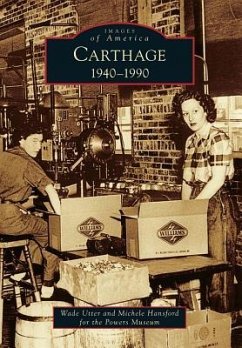By the time residents of Carthage celebrated the city's centennial in 1942, the city had grown to a population of approximately 12,000 and sat at the intersection of two national highways nicknamed "Broadway of America" (US 71) and "Main Street of America" (US 66). As the governmental hub of Jasper County, Carthage was surrounded by bountiful agricultural prairies to the north and east, scenic Ozark hills to the south, and the world's lead and zinc center to the west. This geographic diversity contributed to the town's vibrant economy and growth even in difficult economic times. Images of America: Carthage: 1940-1990 begins after the hard times in the 1930s and focuses on the 1940s through the 1980s, when many schools, churches, and industries expanded or moved to new quarters. Stores and businesses around the courthouse square modernized and competed with new commercial centers developed in other sections of the expanding town.








